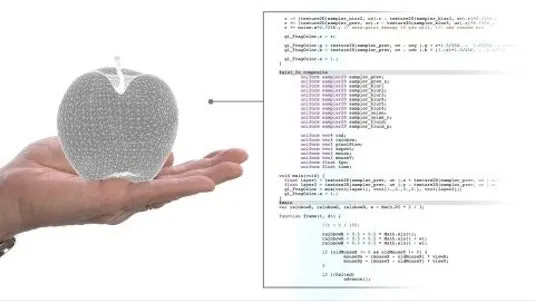
Industrial 3D Scanning and Printing with 3DChimera (FFF & SLS) 
This course provides an introduction to industrial 3D scanning and printing with 3DChimera. It covers 3D scanning, reconstructing CAD data, Carbon Fiber FFF printing, industrial FFF printers, soft jaw test fit, SLS printing Sintratec S2, SLS post processing, and CNC milling with soft jaws. Participants will gain a comprehensive understanding of the latest 3D printing technologies and techniques. ▼
ADVERTISEMENT
Course Feature
![]() Cost:
Cost:
Free
![]() Provider:
Provider:
Youtube
![]() Certificate:
Certificate:
Paid Certification
![]() Language:
Language:
English
![]() Start Date:
Start Date:
On-Demand
Course Overview
❗The content presented here is sourced directly from Youtube platform. For comprehensive course details, including enrollment information, simply click on the 'Go to class' link on our website.
Updated in [February 21st, 2023]
- Introduction
- 3D Scanning
- Reconstructing CAD Data
- Carbon Fiber FFF Printing
- Industrial FFF Printers
- Soft Jaw Test Fit
- SLS Printing Sintratec S2
- SLS Post Processing
- CNC Milling w/ Soft Jaws
(Please note that we obtained the following content based on information that users may want to know, such as skills, applicable scenarios, future development, etc., combined with AI tools, and have been manually reviewed)
3DChimera's Industrial 3D Scanning and Printing with 3DChimera (FFF & SLS) course provides an introduction to 3D scanning, reconstructing CAD data, Carbon Fiber FFF printing, industrial FFF printers, soft jaw test fit, SLS printing Sintratec S2, SLS post processing, and CNC milling with soft jaws. Participants will gain a comprehensive understanding of the fundamentals of 3D scanning and printing, as well as the ability to apply these skills to their own projects.
[Applications]
After completing this course, participants should be able to apply the knowledge and skills they have acquired to a variety of industrial 3D scanning and printing projects. They should be able to use 3DChimera to scan and reconstruct CAD data, as well as use FFF and SLS printing to create parts. They should also be able to use soft jaw test fits and CNC milling with soft jaws to create parts with precision.
[Career Paths]
1. 3D Scanning Technician: 3D scanning technicians use specialized equipment to capture 3D data from physical objects. They are responsible for setting up the equipment, calibrating it, and ensuring that the data is accurate. As 3D printing technology continues to advance, the demand for 3D scanning technicians is expected to increase.
2. 3D Printer Operator: 3D printer operators are responsible for setting up and operating 3D printers. They must be familiar with the different types of 3D printing technologies, such as FFF and SLS, and be able to troubleshoot any issues that may arise. As 3D printing technology continues to become more accessible, the demand for 3D printer operators is expected to increase.
3. 3D CAD Designer: 3D CAD designers use specialized software to create 3D models for 3D printing. They must be familiar with the different types of 3D printing technologies and be able to create models that are optimized for the specific technology. As 3D printing technology continues to become more accessible, the demand for 3D CAD designers is expected to increase.
4. 3D Post-Processing Technician: 3D post-processing technicians are responsible for finishing 3D printed parts. They must be familiar with the different types of post-processing techniques, such as sanding, painting, and polishing, and be able to troubleshoot any issues that may arise. As 3D printing technology continues to become more accessible, the demand for 3D post-processing technicians is expected to increase.
[Education Paths]
1. Bachelor of Science in Mechanical Engineering: This degree path focuses on the design, development, and production of mechanical systems. It covers topics such as thermodynamics, fluid mechanics, and materials science. Students will learn how to use 3D scanning and printing technologies to create and manufacture complex parts and components. Additionally, they will gain an understanding of the latest trends in industrial 3D printing, such as FFF and SLS printing.
2. Bachelor of Science in Computer Science: This degree path focuses on the development of computer systems and software. It covers topics such as algorithms, data structures, and programming languages. Students will learn how to use 3D scanning and printing technologies to create and develop complex software applications. Additionally, they will gain an understanding of the latest trends in industrial 3D printing, such as FFF and SLS printing.
3. Bachelor of Science in Industrial Design: This degree path focuses on the design and development of products and services. It covers topics such as product design, ergonomics, and user experience. Students will learn how to use 3D scanning and printing technologies to create and manufacture complex products. Additionally, they will gain an understanding of the latest trends in industrial 3D printing, such as FFF and SLS printing.
4. Bachelor of Science in Manufacturing Engineering: This degree path focuses on the production and management of manufacturing processes. It covers topics such as process optimization, quality control, and cost analysis. Students will learn how to use 3D scanning and printing technologies to create and manufacture complex parts and components. Additionally, they will gain an understanding of the latest trends in industrial 3D printing, such as FFF and SLS printing.
Course Provider

Provider Youtube's Stats at AZClass
Discussion and Reviews
0.0 (Based on 0 reviews)
Explore Similar Online Courses

The Complete Real Estate Syndication + Crowdfunding Course

Get Up & Running with K0s - A Lightweight Kubernetes Distro Mirantis Labs - Tech Talks

Python for Informatics: Exploring Information

Social Network Analysis

Introduction to Systematic Review and Meta-Analysis

The Analytics Edge

DCO042 - Python For Informatics

Causal Diagrams: Draw Your Assumptions Before Your Conclusions

Whole genome sequencing of bacterial genomes - tools and applications

Interactive 3D Graphics

Bioprinting: 3D Printing Body Parts


Start your review of Industrial 3D Scanning and Printing with 3DChimera (FFF & SLS)